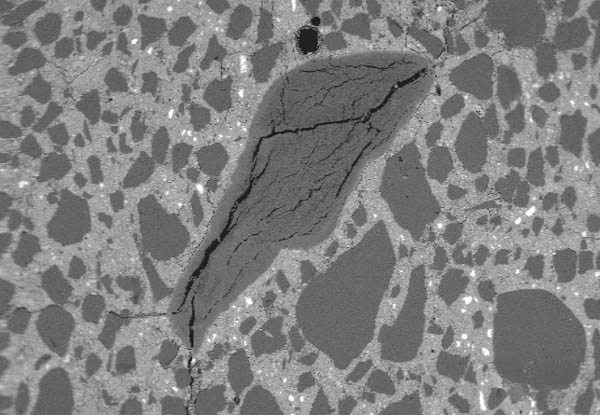Concrete is the most commonly used construction material because of its durability and strength. However, certain chemical reactions within concrete can lead to its deterioration over time. One such reaction is the Alkali-Aggregate Reaction (AAR), which can significantly impact the durability and performance of concrete structures.
What is Alkali Aggregate Reaction?
Alkali Aggregate Reaction refers to a chemical reaction between the alkali hydroxides in cement and reactive minerals in the aggregates used in concrete. This reaction can cause expansion and cracking, compromising the structural integrity of the concrete. There are two primary types of AAR:
- Alka Silica Reaction (ASR): This is the most common form of AAR. It occurs when aggregates containing reactive silica react with the alkali hydroxides in concrete to form a gel. This gel swells as it absorbs water, leading to expansion and cracking.
- Alkali-Carbonate Reaction (ACR): This is less common and involves the reaction between alkalis and certain dolomitic rocks. The reaction leads to the formation of brucite, which can cause expansion and cracking.
Causes of AAR
The primary cause of AAR is the presence of reactive minerals in the aggregates and high alkali content in the cement. Factors such as moisture availability and temperature can also influence the reaction.
Read Also- Different Admixtures Used in Concrete (Concrete Technology)
Effects of Alkali Aggregate Reaction
The long-term effects of Alkali-Aggregate Reaction (AAR) are quite detrimental to concrete structures. Here are some of the key impacts:
- Progressive Cracking: Over time, the expansion caused by AAR leads to more extensive cracking. These cracks can spread throughout the concrete, compromising its structural integrity.
- Reduced Load-Bearing Capacity: As the cracks propagate, the concrete’s ability to bear loads diminishes. This can lead to structural failures, especially in load-bearing elements like beams, columns, and slabs.
- Increased Permeability: Cracks resulting from AAR increase the permeability of concrete, allowing water and other harmful substances to penetrate. This can accelerate other forms of deterioration, such as corrosion of reinforcing steel.
- Spalling and Delamination: In severe cases, the surface of the concrete can start to spall (break off in flakes) or delaminate (separate into layers). This not only affects the appearance but also the durability of the structure.
- Maintenance and Repair Costs: Structures affected by AAR often require extensive maintenance and repair. This can be costly and time-consuming, especially if the damage is widespread.
- Safety Hazards: The structural weaknesses caused by AAR can pose significant safety risks. In extreme cases, it can lead to partial or complete collapse of the structure, endangering lives and property.
- Reduced Service Life: Ultimately, AAR can significantly reduce the service life of concrete structures, necessitating early replacement or major rehabilitation efforts.
Identifying Alkali Aggregate Reaction
Indicators of AAR include random map cracking, closed joints, and spalled concrete. These signs are often observed in areas with frequent moisture exposure, such as near waterlines, retaining walls, and pavements.
Prevention and Mitigation of Alkali Aggregate Reaction
Preventing and mitigating AAR involves several strategies:
- Use of Pozzolanic Materials: Materials like silica fume, fly ash, and ground granulated blast-furnace slag can reduce the alkali content in concrete, thereby minimizing the risk of AAR.
- Lithium Compounds: Adding lithium compounds to the concrete mix can help control ASR by preventing the formation of expansive gels.
- Aggregate Selection: Using non-reactive aggregates or those with low reactivity can prevent AAR. Petrographic examination can help identify potentially reactive aggregates.
- Moisture Control: Limiting the exposure of concrete to moisture can reduce the risk of AAR, as the reaction requires water to proceed.
Read Also- CPWD Handbook on Repair and Rehabilitation of RCC Buildings
Conclusion-
Alkali-Aggregate Reaction is a significant concern for concrete technologists. With proper understanding and preventive measures, its impact can be minimized. By selecting appropriate materials and controlling environmental factors, the durability and longevity of concrete structures can be ensured.
Read Also-
Criteria for Selection of The Repair Material
Uses of Ground Granulated Blast Furnace Slag (GGBS) in Concrete
Lightweight Concrete – Making And Applications
Self Compacting Concrete – Properties and Application
External References-
https://www.cement.org/learn/concrete-technology/durability/alkali-aggregate-reaction
